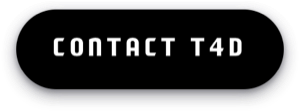The Process Of DNA Testing
Learning the process of DNA testing helps to fight the myths associated with this process. It also gives a person confidence to use it for DNA profiling in case of crimes, conflicts, and other reasons that bring about the need for the service. Just like each person has their own unique finger print pattern, everyone has a unique DNA pattern. DNA testing, also called genetic fingerprinting or DNA profiling allows these unique patterns to be uncovered.
There are several ways that DNA is tested. One of the most common one is polyermase chain reaction, otherwise abbreviated as PCR. This testing process is carried out in various scenarios which include paternity and forensic testing labs. There is also the Restriction Fragment Length Polymorphism DNA testing process.
In the PCR testing method, DNA from sample cells is extracted and primers used to make out the DNA strand's sequence that is of interest. The sequence, once located, is then amplified to make several million or even billions of copies. For instance, if there is a paternity conflict which warrants a paternity test, body cells, also called somatic cells, are obtained from the father's inner lining of the mouth. DNA is then extracted from these cells and amplified to create many copies. Each of these copies then gets compared with those of the offspring in question to check for similarity or a close match. PCR is cheaper and less time consuming compared to the other common DNA testing method, the RFLP. However, care needs to be exercised during the entire process because it is very susceptible to contamination.
Restriction Fragment Length Polymorphism, abbreviated as RFLP, is the second common type of DNA testing. In this process, a restriction enzyme, obtained from bacteria, is used. These enzymes cut the DNA sequence that is of interest in to many copies. Using gel electrophoresis, then according to size, the sequence is separated. Soon after, blotting is done, which involves application of a film on the gel, which is then stained allowing the different bars to be seen. Each bar represents a different sequence. Doing so prevents any further DNA sequences migration in the gel. Finally, on the sequence of interest is attached a DNA probe.
Just like with PCR, the copies of DNA obtained in the RFLP process are also compared with others in the population to see if there is a possible match. However, for paternity testing, instead of having just one person's DNA, there needs to be many other DNA sampling from a larger population to effectively be able to compare samples of the lab to those in the population. This is the primary reason that makes this RFLP method to be a lesser attractive option for DNA testing today, along with the large cost that comes with obtaining more DNA samples from a bigger population.
Using the most trusted laboratories, like TESTING4DNA, for this test is equally important. Such a laboratory ensures accuracy of results obtained, as well as privacy of your information. Above all, it makes the process of DNA testing easy, affordable and comfortable for every party involved.
The Process Of DNA Testing
We are here to help any and all that needs to find out the truth about their loved ones. our DNA test results can be for your peace of mind or for legal purposes, the result of our DNA tests are final and cannot be challenged. T4D™ DNA test service is private & 100% accurate and the results can be used as a legal document. Please feel free and contact us today so you may begin your journey to the truth.
Ways to collect samples: By TESTING4DNA.COM
Self-made cheek swab, FTA Classic Card, Whole Blood Cord Blood, Bloodstains, Sperm (Semen), Toenail or Fingernail Clippings, Amniotic Fluid, Chorionic Villus Sampling, Fetal Tissue ,Chewed Chewing Gum, Cigarette Butts, Hard Candy, Used Condom, Semen Stains On Clothing, Used Tampons or Used Feminine Pads, Sweaty Hat or Ball Cap Hocked Loogie (spit), Plucked Hair, Q-tips with earwax Snotty Kleenexes, Urine, Electric Razor Debris.
Ways to collect samples: By TESTING4DNA.COM
Self-made cheek swab, FTA Classic Card, Whole Blood Cord Blood, Bloodstains, Sperm (Semen), Toenail or Fingernail Clippings, Amniotic Fluid, Chorionic Villus Sampling, Fetal Tissue ,Chewed Chewing Gum, Cigarette Butts, Hard Candy, Used Condom, Semen Stains On Clothing, Used Tampons or Used Feminine Pads, Sweaty Hat or Ball Cap Hocked Loogie (spit), Plucked Hair, Q-tips with earwax Snotty Kleenexes, Urine, Electric Razor Debris.
Call At (866) 773-3671
" To insure 100% accurate results, we run all tests twice "
DNA Testing Locations in The US.
Alabama, Alaska, Arizona, Arkansas, California, Colorado, Connecticut, Delaware, Florida, Georgia, Hawaii, Idaho, Illinois, Indiana, Iowa, Kansas, Kentucky, Louisiana, Maine, Maryland, Massachusetts, Michigan, Minnesota, Mississippi, Missouri, Montana, Nebraska, Nevada, New Hampshire, New Jersey, New Mexico, New York, North Carolina, North Dakota, Ohio, Oklahoma, Oregon, Pennsylvania, Rhode Island, South Carolina, South Dakota, Tennessee, Texas, Utah, Vermont, Virginia, Washington, Washington DC, West Virginia, Wisconsin, Wyoming,
Copyright © TESTING4DNA™
All content on this website is copyright protected & monitored. You may not, except with our express written permission, distribute or commercially exploit our content. Nor may you transmit it or store it in any other website or another form of electronic retrieval system, failing to do so will result in a lawsuit.

